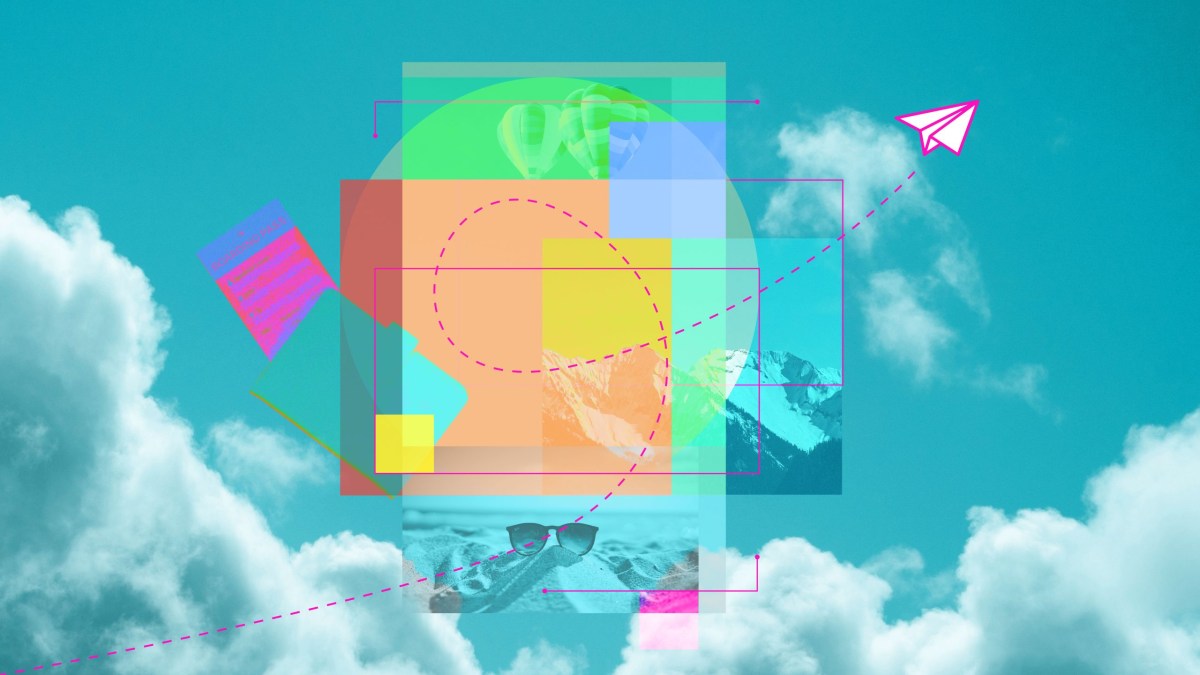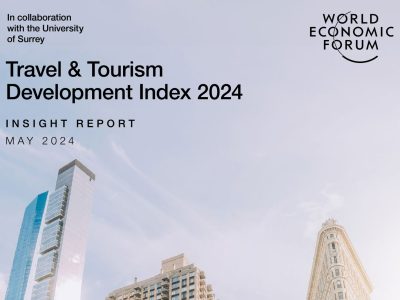As the days grow longer and the temperatures rise, our minds naturally turn to our summer adventures. The prospect of an open summer is tantalizing yet requires more consideration than ever before. Travel has changed, from the pandemic’s challenges and restrictions to our shifting mindset towards more sustainable ways to get away.
In the evolving travel market, brand equity — a brand’s value in the eyes of consumers — and design hold significant sway. Factors such as reputation, trustworthiness, and quality of experience/customer centricity have become even more critical when selecting a travel partner.
Several airlines have unveiled rebrands that reflect a broader shift towards catering to diverse traveler preferences, such as Mucho’s rebrand of Aeroméxico to celebrate 90 years and redefine itself as a symbol of Mexican excellence. Yet, as Roshita Thomas recently wrote about Air India, some rebrands falter in capturing the cultural nuances necessary for authenticity and resonance. In a competitive industry, maintaining brand equity requires more than just a fresh coat of paint. Airlines must prioritize safety, reliability, and customer satisfaction to fortify trust and withstand market pressures. Travelers today wield greater control and awareness than ever before. You see this play out in marketplace innovations stemming from Boeing’s notorious challenges, as evidenced by the ability to filter aircraft models on booking platforms like Kayak and Expedia.
An emerging travel industry narrative seeks to answer the trouble with planes and consumers’ concerns in these strange, uncertain times. Companies like Airbnb are transcending boundaries and blurring the lines between fantasy and reality. Airbnb “Icons,” recently highlighted by Charlotte Beach, exemplify this shift towards highly curated, immersive, unforgettable experiences.

With all the recent turbulence in the travel sector, I was excited to chat with Doug Powell, the former vice president of Design Practice Management at Expedia. Powell is an executive design leader, consultant, lecturer, and global thought leader on design issues. We discussed the future of travel and how design and design thinking are helping to shape it.
Our conversation is below (edited for length and clarity).

Amelia Nash: Can you share with us your recent role with Expedia and how you’ve come to think about building recognition, trust, and positive experiences for travelers?
Expedia is a very complicated company in that it has grown by acquisition. It had become a collection of probably close to 20 different companies, some of them you know very well: hotels.com, Vrbo, Expedia itself, Cars.com, and other fillintheblank.com sites. Expedia had become an unruly set of brands, so the company’s goal was to create a common experience. They’re a unique company in that they have the opportunity to own the entire journey for a traveler, from booking your flight to booking your rental car to booking a hotel or a Vrbo short-term rental to booking museum tickets—linking that all together. As a brand, they needed to consolidate and make it clear that Expedia, hotels.com, and Vrbo, their three primary brands, are connected and offer a seamless experience.
It is interesting to look under the hood at the user experience of their brand apps, which are now built on the same design system and UI—again, trying to create a common experience across all platforms.
This is especially true when people might visit different sites for different reasons. Booking via hotels.com versus Vrbo is a choice for the customer, but on the back end, they want their user experience to be seamless.
It should be invisible to the user. It doesn’t matter to the traveler if it’s hotels.com or Vrbo. They want to book their short-term rental or hotel room. As designers, we need to think systemically and pick up on themes.
Expedia is investing heavily, not surprisingly, in AI as an engine for creating travel experiences, for first envisioning a travel experience and then booking it. For example, they’re demonstrating this flow that starts with “I don’t know where I want to go; I just want to go to a beach.” And that’s the input. Expedia responds, okay, here are flight options, here are rental car options, here are hotel options, and here’s the beach you’re going to go.
Here’s the spooky thing: they’re mining your Instagram feed, your likes and favorites, and your photo library in the background. So when you say you want to go to a beach, they don’t even have to ask you what kind of beach. They already know because you’ve liked your friend’s pictures on Instagram, your friend at a beach. They know exactly where Amelia wants to go. That’s the freaky, geeky part.
That is WILD. I appreciate the “choose your own adventure” style of travel, especially with the state of airlines and air travel, notably Boeing. I have friends who aren’t sure they want to get on a plane and travel right now. How can design and technology help travel businesses adapt to these larger cultural changes and preferences?
That’s a very extreme example of some people’s experience, but it is interesting that “choose your own adventure” can act as a countermeasure. Where sites like Expedia can recognize “Oh, you don’t want to get on a plane? That’s fine. Let me suggest a Vrbo. Let me suggest a road trip. Let me suggest something maybe a little bit more local to you.”
To your point, some people are hesitant to fly, some are interested in more accessible travel, and many are conscious of the environmental impact of travel. An increasing number of people are becoming more conscious of their travel habits and choices and their impact on the planet. Working from home is another aspect. That’s an enduring trend to come out of the pandemic. People are taking longer trips, settling into a place for several weeks or a couple of months, and working from there. Vrbo and Airbnb are now marketing the opportunity in the UI to select an extended stay.

How can design and brand strategies be leveraged to meet these sustainable and experiential preferences and differentiate travel companies in a crowded market? Do any successful brand initiatives come to mind?
A prime example is Airbnb Experiences. Airbnb is a design-driven company, and they detected that Airbnb hosts were starting to offer excursions or city tours as a side benefit to staying at their place. To their credit, Airbnb created a whole product, a service offer that is almost a standalone business, and it’s become super popular and profitable.
Airbnb just did it and got it out into the market. Expedia just totally missed it. Because at the top, Expedia is not a design-driven company. They are not attuned to their customers and their users in the same way that Airbnb is. Expedia didn’t pay attention to the signals and now they’re chasing Airbnb.
Designers pay attention to customers, patients, shoppers, or whoever we design for. By doing so, we stay in touch with our customers as people.
With the travel industry constantly evolving, what is design’s role in adapting to travelers’ changing needs and expectations? Outside of the great Airbnb example, what other innovative design strategies have successfully addressed emerging trends or challenges in travel?
Another is the impact of social media influencers on travel. The Instagram influencer with a million followers who travels and recommends places now recommends an entire trip itinerary. Expedia had a vision of followers basically booking a trip through an influencer, and they were trying to create a back-end functionality for influencers to plug into. So, Sally Jones, whose specialty is traveling in Latin America, can be sponsored by Expedia. On the trips Sally recommends, you click on that trip and get ported right into Expedia to book the exact trip she took.
But you have to have credibility with those influencers. Expedia was behind because an Instagram influencer with a million followers is probably a different demographic than the Expedia user. Their personal brand is on the line when they recommend booking with Expedia. And if a follower books and has a crappy experience on Expedia.com, then it becomes a liability. But the bigger idea is exciting.
How can design, marketing, and branding bridge that gap if your typical users don’t necessarily align with the influencer?
It takes investment from the business, and the business has to make design a priority in solving these early stages of strategizing an idea. Because design and designers are connected to the customer in ways that nobody else in the business is.
That is our [designer’s] specialty. With that connection and understanding of the customer, we then have the ability—our superpower, really—to take that understanding and create something awesome out of it—an experience, a brand, a campaign, a space …
That’s what we do.
Businesses that miss this, that don’t understand, are frequently a step behind. That’s why Airbnb is so unique. They get it, and they have from day one. The first two people in the company, Brian and Joe, are designers. They didn’t have to hire a head of design to fight the battles with design in mind; it’s part of their DNA.
This isn’t to say that Airbnb is perfect, but they tend to be very attuned to their customers, all of their customers, and the complex customer ecosystem.
Considering the online and social media influence on decision-making, how can travel brands utilize design to create memorable, shareable experiences? And how important is it to maintain a consistent visual identity across channels?
You’re uncovering a bigger question about how brands show up in this multichannel world. For some brands, everything doesn’t have to be visually consistent. However, something needs to carry the brand story or voice throughout.
When you give access to your brand to people who are not formally connected to it, such as social media influencers, you can’t possibly control it.
And so, what do you do as a brand? A generation ago, the answer would’ve been that we could not let people out in the world be agents of our brand. That’d be a shit show! But now we’re in a different time.
Collaborations and user-generated expressions of brands are here now, and many of them are brilliant. People grab a brand, make it their own, and put it back out in the world—they make their own signs, ink decorations, t-shirts …

What do you think about AI, the metaverse, and products like the Apple Vision Pro? Considering the friction in travel and the more thoughtful people are about travel choices, is there an opportunity for travel brands to get on that bandwagon?
We’re very early in that technology and we’re a long way from it being accessible and affordable.
It’s not a high spread right now. But certainly, when you think about, from a marketing point of view, being able to experience places you’ve never been.
If you’re interested in going to Cancun but have never been, technology could offer you an experience of what it’s like there. It would be cool to have a virtual preview. If done well, that particular technology will start to get sticky.
It’s like those 360-degree home tours. You can tour the house before you even visit it.
But hopefully, it’ll be more than just looking and turning the cursor this way or that way.
One of my favorite Disneyland rides as a kid was the California Soaring Adventure because you’d soar through the California seaside in your hang glider. They factored in all the senses: the wind, ocean spray, the citrus smells in an orange orchard. Could we get these kinds of immersive virtual vacations?
What you’re describing is interesting because it’s not like replicating a vacation. It takes you somewhere you could go to, but you couldn’t go in the same way. Think about deep-sea underwater exploration, space travel, or something like mountain climbing.
For experiences that would be difficult for most of us to do, this could be another way of stretching the possibilities.

Do you feel that travel is at risk in the future with AI escapes and immersive virtual vacations? Will people eventually opt for that instead of going to a physical location?
Not in the foreseeable future. It’s down the line, sure.
Travel is a fascinating space. Everybody is a traveler, every person on the planet is a traveler, and everyone has an interest in travel in different ways. For some people, traveling could be going to their family cabin on the weekend, two hours away. Travel could be going to Patagonia and trekking for three weeks. It could be business travel, a family trip to Disneyland, or all these, but everyone travels in some universal way.
Imagery courtesy of the author.










